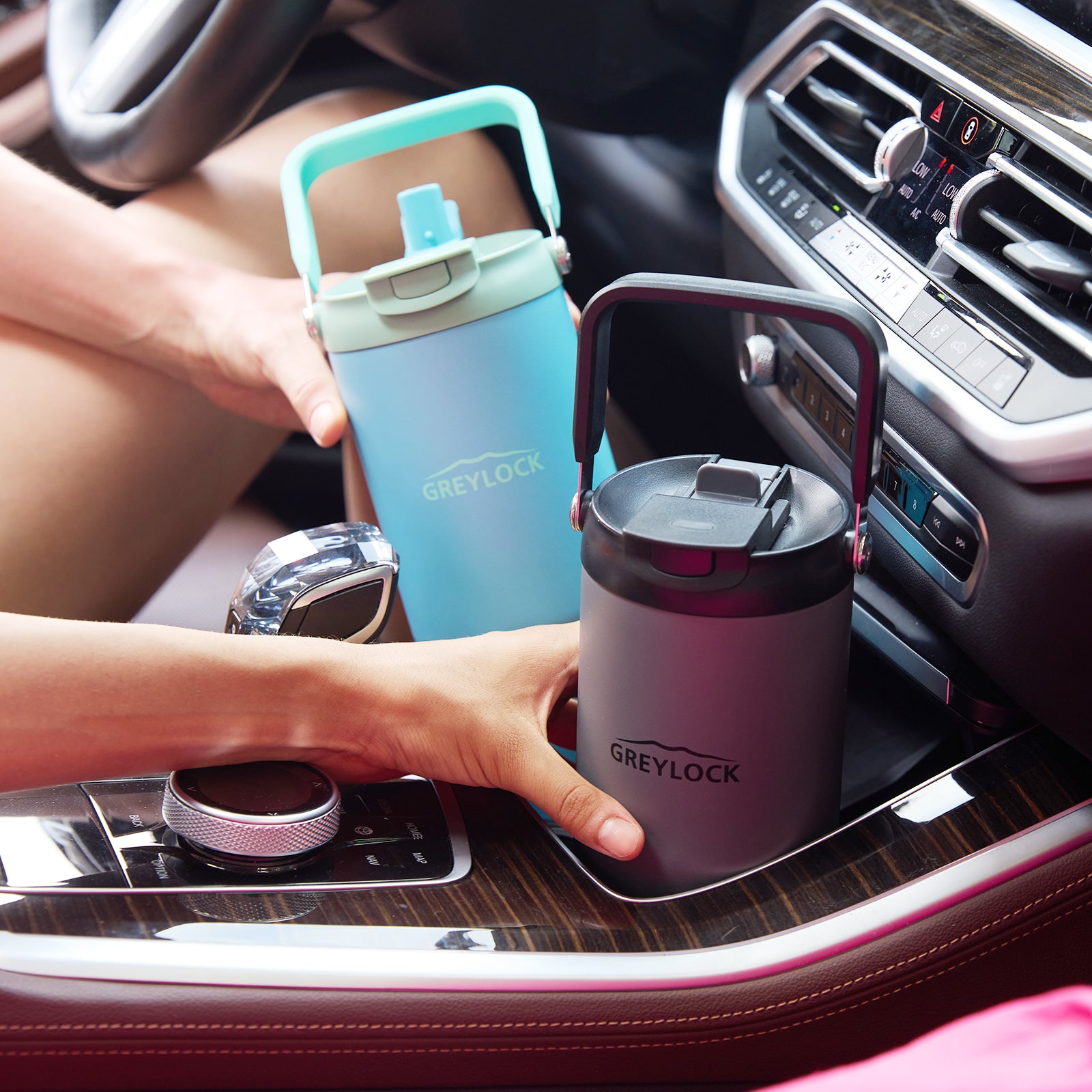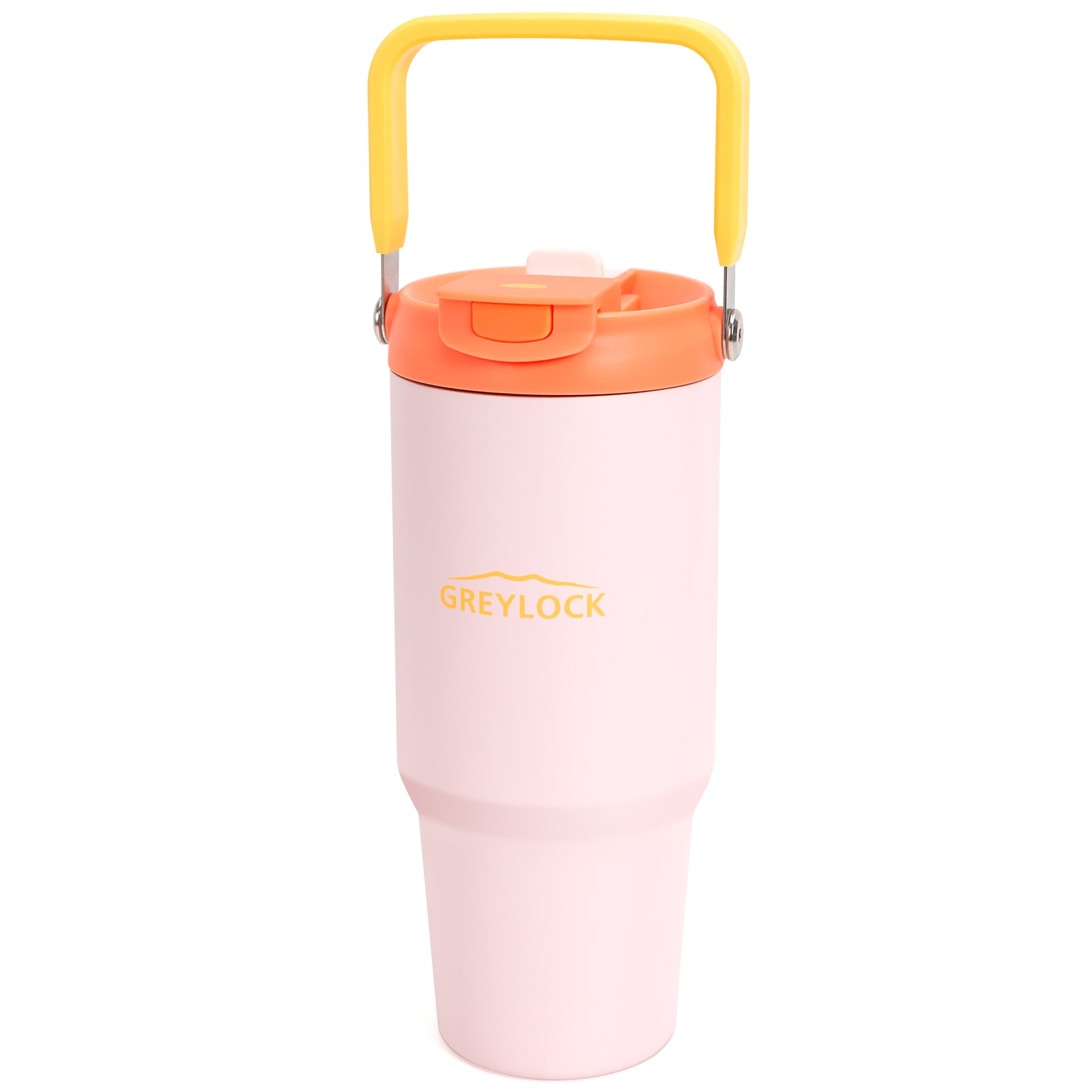You may have wondered how many ounces in a liter. The answer is simple: there are about 33.814 fluid ounces in a liter. This precise conversion plays a vital role in many aspects of daily life. Whether you are measuring ingredients for a recipe, conducting scientific experiments, or tracking your water intake, understanding this relationship ensures accuracy. A liter, as part of the metric system, converts to approximately 33.814 ounces in the US customary system. Knowing this helps you bridge the gap between these two measurement systems with ease.

Table of Contents
-
How Many Ounces in a Liter?
-
What Is a Liter?
-
What Is a Fluid Ounce?
-
How to Convert Liters to Fluid Ounces
-
How to Convert Fluid Ounces to Liters
-
Common Conversions Between Liters and Fluid Ounces
-
Tools to Convert Ounces to Liters
-
Why Understanding Converting Between Fluid Ounces and Liters Matters
-
Tips for Accurate Conversions
-
FAQ
How Many Ounces in a Liter?
Exact Conversion: 1 Liter = 33.814 US Fluid Ounces
You may already know that 1 liter equals about 33.814 fluid ounces in the US measurement system. This precise conversion is essential for tasks that require accuracy, such as cooking or scientific calculations. The US fluid ounce, a unit in the customary system, represents 1/128 of a US gallon. This means that when you measure a liter, you are working with approximately 33.814 ounces of liquid volume.
To convert liters to fluid ounces, you multiply the number of liters by 33.814. For example, if you have 2 liters, multiplying by 33.814 gives you 67.628 fluid ounces. This straightforward formula ensures you can handle conversions quickly and without confusion. Whether you're measuring water, milk, or any other liquid, this conversion factor remains consistent.
Why the Conversion Differs for UK Fluid Ounces
The difference between US and UK fluid ounces often causes confusion. While the US fluid ounce is slightly larger, the UK fluid ounce is based on the Imperial system. One Imperial fluid ounce equals 0.9607603 US fluid ounces. This distinction arises because the two systems define their units differently. For instance, the US fluid ounce derives its measurement from being 1/128 of a US gallon, while the Imperial fluid ounce follows a separate standard.
If you need to convert liters to UK fluid ounces, the calculation changes. One liter equals approximately 35.195 Imperial fluid ounces. This means that when working with UK measurements, you must adjust your conversions to reflect this difference. For example, 2 liters would equal about 70.39 Imperial fluid ounces. Understanding these variations ensures you can adapt to different measurement systems with ease.
By recognizing these distinctions, you can confidently answer questions like "how many ounces in a liter" regardless of the system in use. Whether you're dealing with US or UK measurements, knowing the exact conversion helps you avoid errors and ensures precision in your tasks.
What Is a Liter?
Definition of a Liter
A liter serves as a fundamental unit of volume in the metric system. It represents the capacity of 1,000 cubic centimeters or milliliters. This measurement is widely used to quantify liquids such as water, milk, and oil. The liter is denoted by the symbol "L" or "l," making it easy to identify in various contexts.
The origin of the liter ties back to its relationship with water. One liter equals the volume of one kilogram of water at its maximum density, which occurs at 4°C (39°F). This connection highlights the practicality of the liter in scientific and everyday applications. Whether you're measuring beverages or calculating liquid volumes in experiments, the liter provides a reliable standard.
The Liter in the Metric System
The metric system, known for its simplicity and efficiency, organizes units in multiples of ten. The liter fits seamlessly into this structure, equaling one cubic decimeter. This straightforward relationship makes conversions within the metric system intuitive and user-friendly.
The liter's adoption extends across industries and fields. It facilitates standardized communication of volume, ensuring consistency in measurements worldwide. For instance:
-
In science, the liter is essential for precise liquid measurements in laboratories.
-
In commerce, it is used to package and sell products like beverages and cleaning supplies.
-
In daily life, you encounter liters when purchasing bottled water or fuel.
The metric system's global acceptance underscores the importance of the liter. Its versatility and ease of use make it a preferred choice for measuring liquid volumes, bridging gaps between scientific precision and practical needs.
What Is a Fluid Ounce?
Definition of a Fluid Ounce
A fluid ounce serves as a unit of volume measurement in both the United States customary system and the imperial system. Unlike the ounce, which measures weight, a fluid ounce quantifies liquid volume. In the United States, one fluid ounce equals 1/128th of a gallon, 1/32nd of a quart, or 1/16th of a pint. This makes it a practical unit for measuring smaller amounts of liquid, such as ingredients in recipes or beverages.
The abbreviation for a fluid ounce is fl oz, and it is widely recognized in various contexts. For example, one fluid ounce equals approximately 29.573 milliliters in the metric system. This conversion highlights its smaller size compared to a liter, which contains about 33.814 fluid ounces. You often encounter this unit in everyday life, whether reading nutrition labels, following recipes, or purchasing drinks.
The origins of the fluid ounce trace back to historical systems of measurement. It was initially based on the volume of one ounce avoirdupois of water. Over time, standardization ensured consistency in its definition, making it a reliable unit for liquid measurements. Understanding the fluid ounce helps you navigate tasks requiring precision, especially when converting between metric and customary systems.
US vs. UK Fluid Ounces: Key Differences
The fluid ounce differs between the United States and the United Kingdom due to variations in their measurement systems. In the United States, one fluid ounce equals approximately 29.573 milliliters. However, in the United Kingdom, the imperial fluid ounce equals about 28.413 milliliters. This distinction arises from the different standards used to define gallons, pints, and ounces in each system.
For example, one US gallon equals 128 US fluid ounces, while one imperial gallon equals 160 imperial fluid ounces. This difference impacts conversions involving liters. A liter equals approximately 33.814 US fluid ounces but converts to about 35.195 imperial fluid ounces. When working with recipes or measurements from different regions, recognizing these differences ensures accuracy.
To adapt to these variations, you can use conversion tools or formulas. For instance, multiplying the number of liters by 33.814 provides the equivalent in US fluid ounces, while multiplying by 35.195 gives the value in imperial fluid ounces. This knowledge helps you handle international recipes, scientific experiments, or any task requiring precise liquid measurements.
By understanding the distinctions between US and UK fluid ounces, you can confidently approach conversions and avoid errors. Whether you're measuring liquids for cooking or analyzing data, this clarity ensures your results remain accurate and reliable.
How to Convert Liters to Fluid Ounces

The Formula for Conversion
To convert liters to fluid ounces, you need a simple formula. Multiply the number of liters by 33.814. This constant represents the exact number of US fluid ounces in one liter. The formula ensures accuracy and eliminates guesswork when dealing with liquid measurements.
Formula:
Fluid Ounces = Liters × 33.814
This formula applies specifically to US fluid ounces. If you are working with UK fluid ounces, the conversion factor changes to approximately 35.195. However, for most applications in the United States, the value 33.814 remains the standard.
Using this formula, you can handle conversions for various tasks, such as measuring liquids for recipes, calculating beverage volumes, or even tracking daily water intake. The simplicity of this method makes it accessible for anyone, regardless of their familiarity with measurement systems.
Step-by-Step Example of Converting Liters to Fluid Ounces
Let’s break down the process of converting liters to fluid ounces with a practical example. Suppose you have 2 liters of liquid and need to determine how many fluid ounces this equals.
-
Start with the formula:
Fluid Ounces = Liters × 33.814 -
Insert the value of liters:
Fluid Ounces = 2 × 33.814 -
Perform the multiplication:
Fluid Ounces = 67.628 -
State the result:
Two liters equal 67.628 fluid ounces.
This step-by-step approach ensures clarity and precision. You can apply the same method to any volume in liters. For instance, if you need to convert 0.5 liters, multiply 0.5 by 33.814. The result is 16.907 fluid ounces.
For quick reference, here’s a summary of common conversions:
-
1 liter = 33.814 fluid ounces
-
2 liters = 67.628 fluid ounces
-
5 liters = 169.07 fluid ounces
Understanding how to convert liters to fluid ounces empowers you to handle measurements confidently. Whether you’re preparing a recipe or managing scientific data, this knowledge ensures accuracy and efficiency.
How to Convert Fluid Ounces to Liters
The Reverse Formula for Conversion
Converting fluid ounces to liters requires a straightforward formula. You divide the number of fluid ounces by 33.814, which is the exact conversion factor. This calculation ensures precision when switching from the US customary system to the metric system.
Formula:
Liters = Fluid Ounces ÷ 33.814
This formula applies specifically to US fluid ounces. If you work with UK fluid ounces, the conversion factor changes slightly due to differences in measurement systems. However, for most practical purposes in the United States, dividing by 33.814 remains the standard approach.
Using this formula, you can convert ounces to liters for various tasks. Whether you're measuring liquids for recipes, calculating beverage volumes, or conducting scientific experiments, this method guarantees accuracy. The simplicity of the formula makes it accessible even if you're unfamiliar with unit conversions.
Step-by-Step Example of Converting Fluid Ounces to Liters
Let’s walk through an example to illustrate how to convert fluid ounces to liters. Suppose you have 50 fluid ounces of liquid and need to determine the equivalent volume in liters.
-
Start with the formula:
Liters = Fluid Ounces ÷ 33.814 -
Insert the value of fluid ounces:
Liters = 50 ÷ 33.814 -
Perform the division:
Liters ≈ 1.48 -
State the result:
Fifty fluid ounces equal approximately 1.48 liters.
This step-by-step process ensures clarity and eliminates confusion. You can apply the same method to any volume of fluid ounces. For instance, if you need to convert 16 fluid ounces, divide 16 by 33.814. The result is approximately 0.47 liters.
For quick reference, here’s a summary of common conversions:
-
16 fluid ounces = 0.47 liters
-
32 fluid ounces = 0.95 liters
-
64 fluid ounces = 1.89 liters
Understanding how to convert fluid ounces to liters empowers you to handle measurements confidently. Whether you're preparing a recipe, managing hydration goals, or working on a project, this knowledge ensures precision and efficiency.
Common Conversions Between Liters and Fluid Ounces
Conversion Table for Quick Reference
When working with liquid measurements, having a quick reference table can save you time and effort. Below is a conversion table that highlights common values for liters to fluid ounces. This table ensures you can quickly find the equivalent volume without performing calculations.
|
Liters |
US Fluid Ounces |
|---|---|
|
0.5 L |
16.907 fl oz |
|
1 L |
33.814 fl oz |
|
1.5 L |
50.721 fl oz |
|
2 L |
67.628 fl oz |
|
2.5 L |
84.535 fl oz |
|
3 L |
101.442 fl oz |
|
5 L |
169.07 fl oz |
This table uses the exact conversion factor of 33.814 US fluid ounces per liter. For example, if you have 2 liters of liquid, you can see from the table that it equals 67.628 fluid ounces. Similarly, 0.5 liters converts to 16.907 fluid ounces, which is slightly more than a standard 16-ounce water bottle.
Examples of Everyday Applications
Understanding how to convert liters to ounces proves useful in many real-life scenarios. Here are some examples where this knowledge can make your tasks easier and more accurate:
-
Cooking and Baking: Recipes often use different measurement systems. If a recipe calls for 1 liter of milk, you now know it equals 33.814 fluid ounces, which helps when using measuring cups marked in ounces.
-
Hydration Tracking: Many people track their daily water intake in liters or ounces. For instance, if your goal is to drink 2 liters of water daily, this equals 67.628 fluid ounces, or roughly four 16-ounce water bottle.
-
Purchasing Beverages: Bottled drinks often display their volume in liters. If you buy a 1.5-liter soda bottle, you can calculate that it contains 50.721 fluid ounces, helping you understand its size in familiar terms.
-
Fuel and Automotive Fluids: In some countries, fuel and automotive fluids are measured in liters. Knowing that 5 liters equals 169.07 fluid ounces can help you compare prices or quantities when traveling internationally.
-
Medical and Scientific Use: In healthcare or laboratory settings, precise conversions between liters and fluid ounces are critical. For example, a 0.5-liter IV bag contains 16.907 fluid ounces, ensuring accurate dosing.
By applying these conversions, you can navigate tasks involving liquid measurements with confidence. Whether you're in the kitchen, at the store, or managing hydration, understanding the relationship between liters and fluid ounces simplifies your work and enhances accuracy.
Tools to Convert Ounces to Liters
Online Conversion Calculators
Online conversion calculators provide a quick and reliable way to convert ounces to liters. These tools eliminate the need for manual calculations, ensuring accuracy every time. You simply input the value in ounces, and the calculator instantly provides the equivalent in liters. Many of these platforms also allow you to switch between US and UK fluid ounces, making them versatile for international use.
Some popular online tools include:
-
Unit Conversion Websites: These platforms offer a wide range of unit conversions, including volume, weight, and temperature. They are user-friendly and accessible from any device with an internet connection.
-
ConversionCalc Plus: This tool supports over 500 conversion combinations, covering not only volume but also weight, temperature, and energy. Its comprehensive database ensures you can handle even the most complex conversions.
-
Specialized Metric Converters: These websites focus on metric-to-customary conversions, making them ideal for tasks involving liters and fluid ounces.
Using these calculators saves time and reduces the risk of errors. Whether you're working on a recipe or a scientific project, these tools ensure precision and efficiency.
Smartphone Apps for Unit Conversions
Smartphone apps offer a convenient way to perform unit conversions on the go. These apps are designed with intuitive interfaces, allowing you to convert ounces to liters with just a few taps. They often include additional features, such as saving frequently used conversions or switching between measurement systems.
Here are some highly-rated apps for unit conversions:
-
Unit Converter App: This app provides more than 12 categories of unit conversions, including volume, weight, and temperature. Its simple and optimized interface makes it easy to use for daily tasks.
-
Conversion Calculator App: Designed for iPhone and iPad, this app offers a clean interface and user-friendly navigation. You can quickly convert units with swipe actions, making it perfect for busy users.
-
Unit Conversion App: This app supports conversions across US, imperial, and metric systems. It includes features like length, area, and speed converters, making it a versatile tool for various needs.
-
ConversionCalc Plus: With its extensive database of 70 built-in units, this app handles complex conversions effortlessly. It works well for professionals who need precise measurements in fields like engineering or science.
Pro Tip: Look for apps that allow offline functionality. This ensures you can perform conversions even without an internet connection.
By using these apps, you can simplify your tasks and ensure accurate results. Whether you're in the kitchen, at work, or traveling, these tools provide the flexibility and reliability you need.
Why Understanding Converting Between Fluid Ounces and Liters Matters
Importance in Cooking and Recipes
Cooking and baking often require precise measurements to achieve the desired results. Recipes may call for ingredients in different units, such as liters, cups, or fluid ounces. If you’ve ever wondered how many ounces in a liter of water or milk, understanding this conversion can save you from guesswork. For example, when a recipe asks for 1 liter of milk, knowing that it equals 33.814 fluid ounces ensures you measure accurately. This precision is especially critical in baking, where even small deviations can affect the texture and flavor of your dish.
Many recipes from around the world use the metric system, while others rely on the US customary system. If you need to convert liters to fluid ounces, the process becomes straightforward once you understand the relationship between these units. For instance, if a recipe calls for 0.5 liters of cream, you can quickly calculate that it equals 16.907 fluid ounces. This knowledge bridges the gap between measurement systems, allowing you to follow recipes from any region with confidence.
Certain ingredients, like butter or flour, may also require conversions based on their density. If you’re wondering how many ounces in a liter of butter or flour, the answer depends on the ingredient’s specific properties. Butter, for example, has a different density than water, so its conversion may vary slightly. By understanding these nuances, you can ensure your measurements remain accurate, whether you’re preparing a delicate soufflé or a hearty loaf of bread.
Relevance in Science and Medicine
In science and medicine, precision is non-negotiable. Accurate conversions between fluid ounces and liters play a vital role in experiments, medical dosages, and laboratory work. For instance, if a scientist needs to measure 1 liter of a solution, they must know it equals 33.814 fluid ounces to ensure the experiment’s success. Similarly, healthcare professionals often deal with intravenous fluids or medications measured in liters. Understanding how many ounces in a liter of water or saline can help them administer the correct dosage.
The global shift toward the metric system highlights the importance of converting between fluid ounces and liters. While many countries use liters as their standard unit of volume, the United States still relies on traditional units like pints and gallons. This difference can create challenges in international research or medical collaborations. Knowing how to convert liters to fluid ounces ensures seamless communication and prevents errors in critical situations.
For example, a medical professional might need to determine how many ounces in a liter of IV fluid to prepare the correct amount for a patient. Similarly, a researcher working with chemical solutions must accurately measure volumes to maintain the integrity of their results. These scenarios demonstrate the practical significance of mastering these conversions in scientific and medical fields.
By understanding the importance of converting between fluid ounces and liters, you equip yourself with a valuable skill. Whether you’re in the kitchen, the lab, or the hospital, this knowledge ensures accuracy and enhances your ability to handle tasks with confidence.
Tips for Accurate Conversions
Avoiding Common Mistakes
Accurate conversions between liters and fluid ounces require attention to detail. Many errors occur due to rounding, incorrect formulas, or confusion between US and UK fluid ounces. To avoid these pitfalls, you should always verify the measurement system you are working with. For instance, remember that 1 liter equals 33.814 US fluid ounces but approximately 35.195 UK fluid ounces. Mixing these systems can lead to significant inaccuracies.
Another common mistake involves estimating instead of calculating. While approximations may seem convenient, they often result in errors, especially in tasks requiring precision, such as baking or scientific experiments. Always rely on exact conversion factors and perform calculations carefully. For example, when converting 2 liters to fluid ounces, multiplying by 33.814 ensures you get the precise value of 67.628 fluid ounces.
Measuring tools also play a critical role in avoiding mistakes. Using inaccurate or poorly calibrated tools can lead to incorrect results. Ensure your measuring cups, scales, or other devices are reliable and suited for the task. If you’re working with recipes or laboratory measurements, double-check your tools to maintain accuracy.
Using Reliable Tools and Resources
Reliable tools and resources simplify the process of converting between liters and fluid ounces. A digital scale is one of the most accurate tools for measuring liquids. Scales provide precise readings, eliminating guesswork. If a scale isn’t available, calculators or conversion apps offer a practical alternative. These tools allow you to input values and instantly receive accurate results.
Online conversion calculators are particularly useful for quick and error-free conversions. Websites like Unit Conversion or specialized metric converters let you switch between US and UK fluid ounces effortlessly. These platforms ensure you can handle diverse measurement systems without confusion. For mobile users, apps like Unit Converter or ConversionCalc Plus provide on-the-go solutions. These apps often include additional features, such as saving frequently used conversions or offline functionality.
For those who prefer manual methods, keeping a conversion table handy can be invaluable. A table listing common conversions, such as 1 liter = 33.814 fluid ounces or 2 liters = 67.628 fluid ounces, saves time and ensures accuracy. Whether you’re in the kitchen, lab, or workplace, these resources help you achieve precise results.
Pro Tip: Always cross-check your conversions with a trusted source. This practice ensures consistency and minimizes errors, especially when working on critical tasks like medical dosages or scientific experiments.
By avoiding common mistakes and using reliable tools, you can master conversions with confidence. Whether you’re preparing a recipe, conducting research, or managing daily tasks, these strategies ensure precision and efficiency.
Understanding how many ounces in a liter is essential for navigating various tasks with precision. A liter equals about 33.814 fluid ounces, a conversion that proves invaluable in cooking, science, and everyday activities. Whether you're following a recipe, measuring fluids for medical purposes, or interpreting international product labels, this knowledge ensures accuracy. Use tools like conversion calculators or apps to simplify the process and avoid errors. By mastering these conversions, you can confidently handle measurements and achieve success in any context requiring precise volume calculations.
FAQ
Why is it necessary to convert between liters and fluid ounces?
You often encounter the need to convert between liters and fluid ounces because different regions use distinct measurement systems.
How do I quickly convert liters to fluid ounces?
To convert liters to fluid ounces, multiply the number of liters by 33.814. This formula works for US fluid ounces. For example, if you have 2 liters, multiplying by 33.814 gives you 67.628 fluid ounces. If you need to convert to UK fluid ounces, use 35.195 as the multiplier. Keeping this simple formula in mind allows you to handle conversions efficiently.
How many fluid ounces are in a liter of water?
A liter of water equals 33.814 US fluid ounces. This conversion remains consistent regardless of the liquid, as it is based on volume rather than weight. For UK fluid ounces, a liter equals approximately 35.195 fluid ounces.
Why does the US still use fluid ounces instead of liters?
The United States continues to use the imperial system, including fluid ounces, due to historical and cultural factors. While many countries have adopted the metric system for its simplicity, the US has retained its traditional units for everyday use. This creates a need for conversions when dealing with international recipes, products, or scientific data.
What tools can I use to convert between liters and fluid ounces?
You can use several tools to simplify conversions:
You can use several tools to simplify conversions:
-
Smartphone apps: Apps like Unit Converter or ConversionCalc Plus allow you to convert on the go.
-
Conversion tables: A printed or digital table listing common conversions offers a handy reference.
These tools ensure precision and save time when working with measurements.
Are online conversion calculators reliable?
Most online calculators are reliable for basic conversions, but their accuracy depends on the source. Always verify the results with a trusted platform or cross-check using a manual formula. For critical tasks, such as medical dosages or scientific experiments, double-checking ensures accuracy.
Can I estimate conversions without a calculator?
Yes, you can estimate conversions by rounding the conversion factor. For example, 1 liter equals approximately 34 fluid ounces. While this method provides a rough estimate, it may not be precise enough for tasks requiring accuracy, such as baking or laboratory work.
What are some common scenarios where I might need these conversions?
You might need to convert between liters and fluid ounces in various situations:
-
Cooking: Recipes often use different measurement systems.
-
Hydration tracking: Water bottles may list volume in liters, while your goal might be in ounces.
-
Shopping: Beverage packaging frequently uses liters, especially for imported products.
-
Science and medicine: Precise measurements are critical in experiments and medical dosages.
Understanding these conversions helps you navigate these scenarios with confidence.
How do I avoid mistakes when converting?
To avoid errors, always use the correct conversion factor. Remember that 1 liter equals 33.814 US fluid ounces and approximately 35.195 UK fluid ounces. Double-check your calculations and use reliable tools. Avoid estimating unless precision is unnecessary.
Why should I learn to convert manually instead of relying solely on tools?
Learning manual conversions enhances your understanding of measurement systems. It also prepares you for situations where tools may not be available, such as during travel or emergencies. By mastering the formulas, you gain confidence and independence in handling measurements.






























Share:
How Many Ounces in a Gallon? Your Ultimate Handbook to Bottle Sizes
How Much Caffeine Is in a Cup of Coffee? Everything You Need to Know About Caffeine